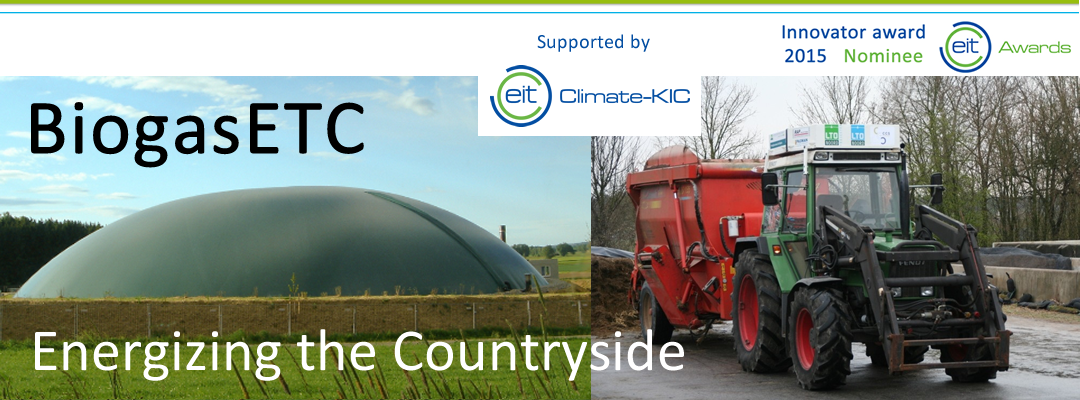Since 2012 is at KTC De Marke a new biogas installation operational: Fermtech system. The biogas installation is built as much as possible with the existing infrastructure of the old biogas installation. The biogas installation consists of a pre-mixing pit, hydrolysis reactor, methane reactor, integrated digestate and biogas storage tank and a CHP-installation.
The cattle manure in the manure storage is being mixed daily with a submersible mixer. A pump located is in the manure storage which is activated directly after mixing and pumps a pre-set amount automatically to the hydrolysis tank via a heat exchanger (ca. 500C). The amount is being measured with a flow meter. In the manure storage is there is always a layer of approximately of 30 cm (± 100 m3) cattle manure present. This is necessary to enable the mixing and pumping of the manure.
The hydrolysis reactor is a lying tank with a volume of ca. 30 m3. The tank has a mixing system which rotates slowly in the radial direction of the tank. In the tank is a ventilation hole present in order to bleed certain gasses such as H2S. The pH in the tank is being preferably kept under a value of 6. It is therefore important to quickly establish a culture of micro-organism. Otherwise methane will escape through the ventilation hole. The temperature in the hydrolysis tank is around 50-550C.
The methane reactor has a contents of 80 m3 (diameter 3 m, height 11 m) and has no mixing system. The hydrolysed manure is being fed with a temperature of around 40-450C to the bottom of the methane reactor after which finds its way to the top of the methane reactor. The temperature in the top of the methane reactor is around 35-400C. The biogas that is formed in the top of the methane reactor is being transported to the post-digestion tank: a large insulated concrete tank of 1.400 m3 which is on the inside covered with a manure and gas protected coating. The post-digestion tank has a submersible mixer (7,5 kWh) on a fixed height. The addition of a small amount of outside air to the tank oxidizes most of the formed hydrogen sulphide (H2S) to sulphur which with the digestate is transported to the post storage tank.
The biogas is drawn from the post storage tank by a CHP-installation. The CHP-installation consists of a gas engine (MAN E0824 E302) and a generator. The electrical capacity is 36 kWe and the thermal capacity is 51 kWth. The produced heat of the CHP-installation is being used to maintain the temperature of the digestion process. The produced electricity is being used to cover the own electricity consumption at KTC De Marke and the surplus is being sold over the public electricity grid.

